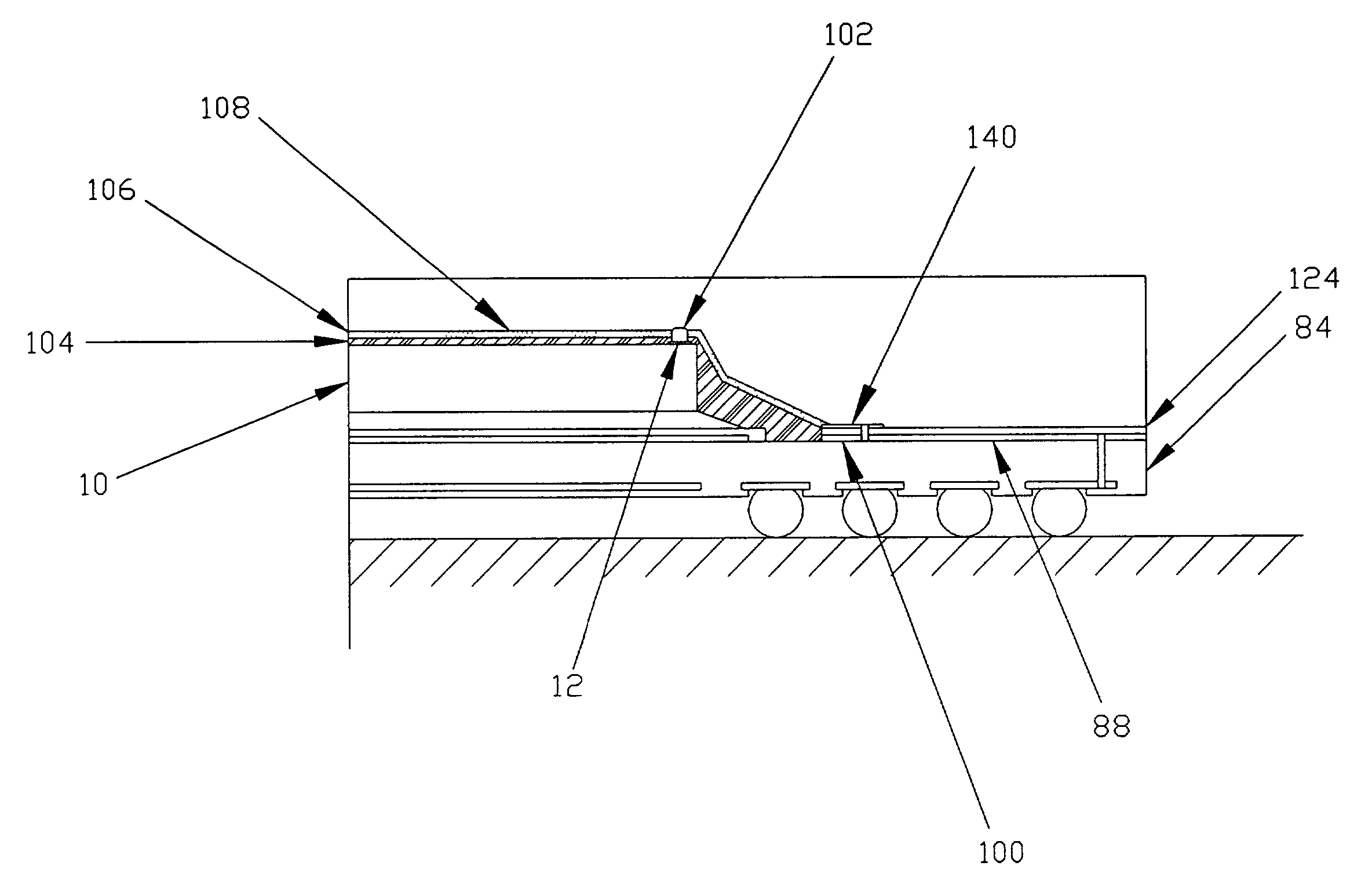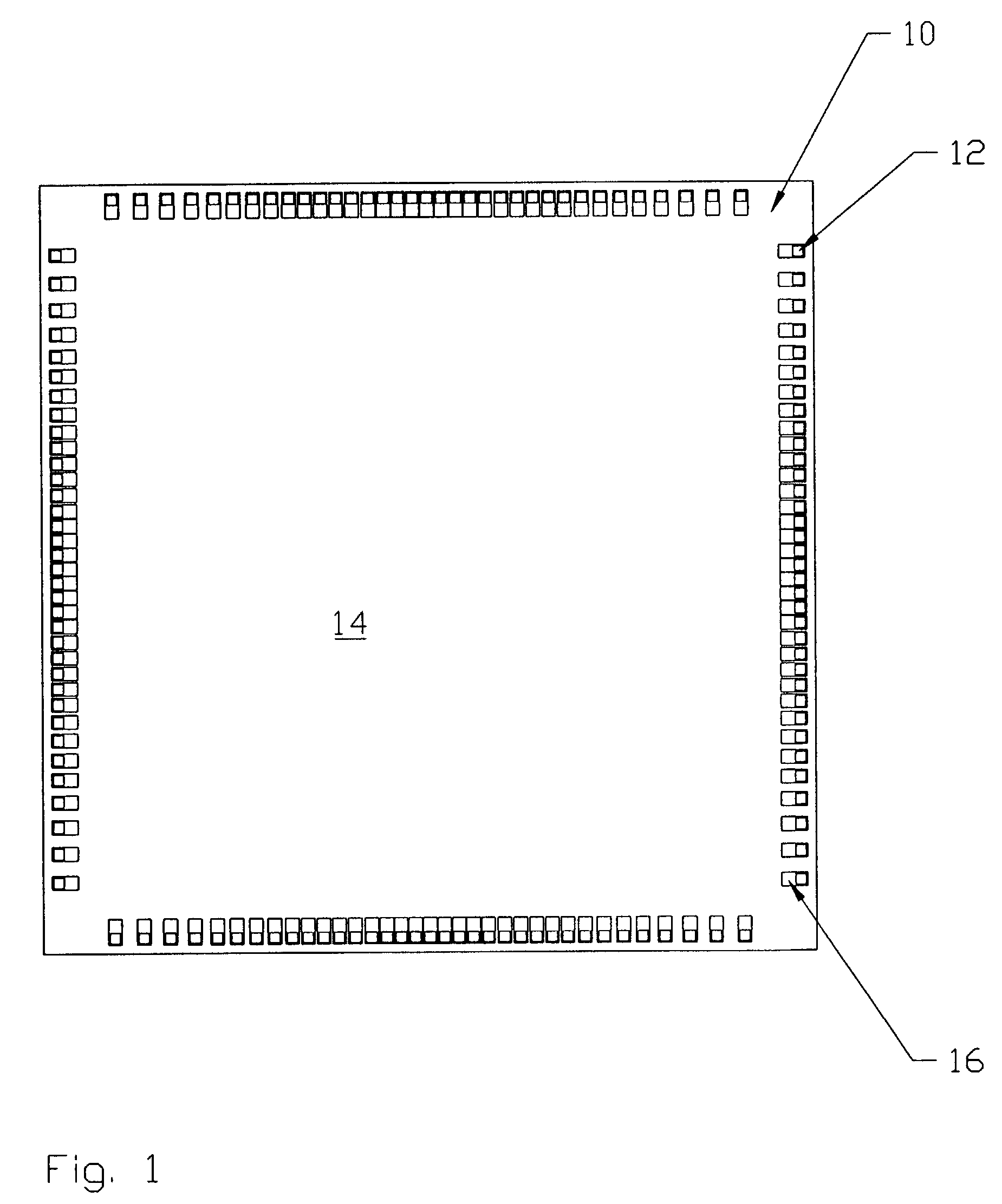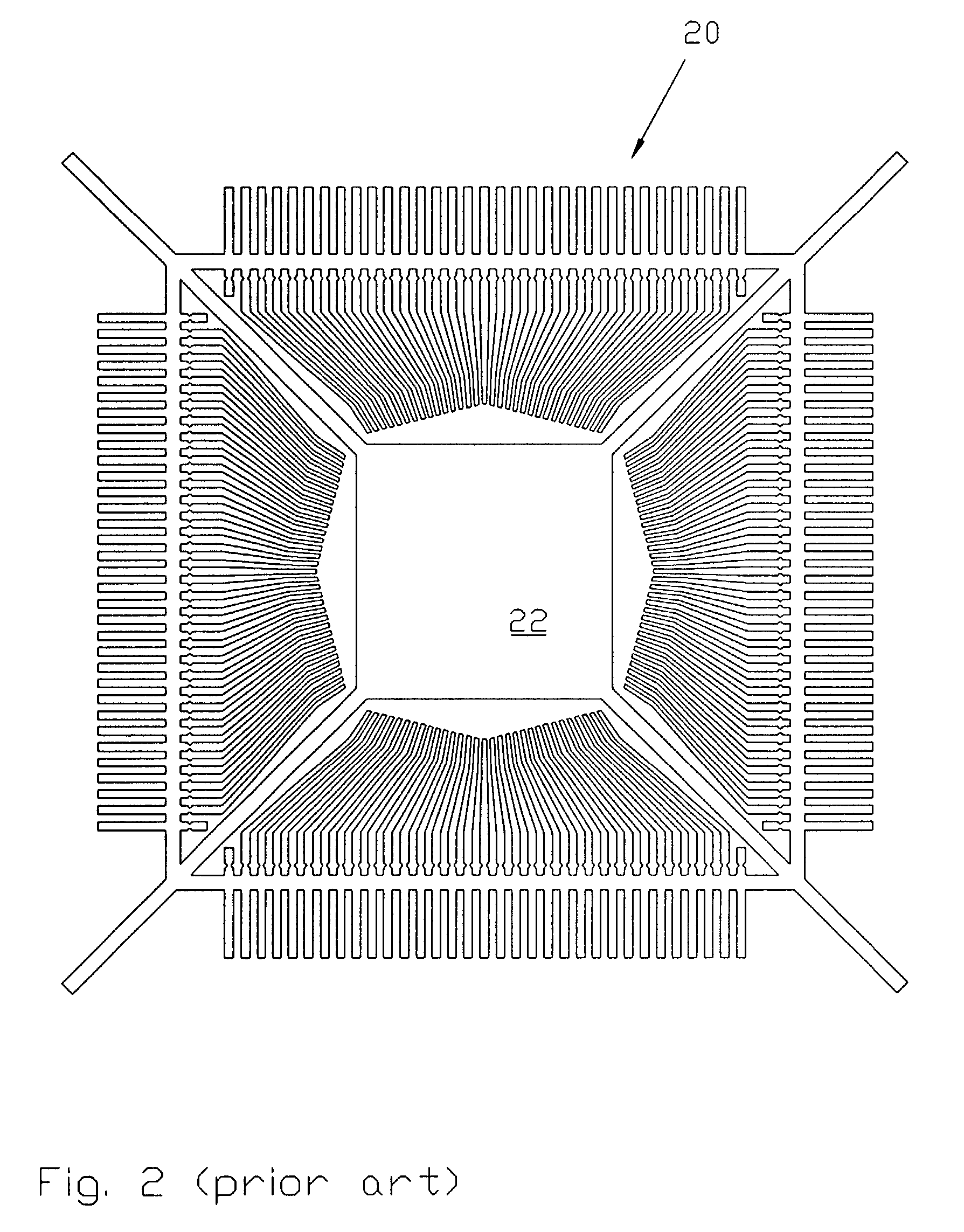Multilayer laser trim interconnect method
a laser trim and interconnect technology, applied in the direction of semiconductor/solid-state device details, semiconductor devices, electrical equipment, etc., can solve the problems of increasing complexity and shrinking of semiconductor devices, increasing the footprint of packages, and increasing the complexity of semiconductor devices
- Summary
- Abstract
- Description
- Claims
- Application Information
AI Technical Summary
Benefits of technology
Problems solved by technology
Method used
Image
Examples
Embodiment Construction
[0022] The problems noted above are solved in large part by a method of creating electrical interconnects between a die and package without the use of wirebonds. Without wirebonds, the problems discussed above are eliminated or at least ameliorated to a great extent. Accordingly, the preferred method is to electrically connect a die and package substrate by applying an electrically non-conducting material over a die, extending onto the package substrate, and leaving a portion of the substrate contact pads exposed. An electrically conductive material is then applied over the non-conductive layer, coming into electrical contact with the die preferably by flowing into holes formed in the insulating layer over the die bond pads or by contacting conductive bumps which are formed on the die bond pads and protrude through the insulating layer. Portions of the conductive layer are then selectively removed to form conductive patches between electrical points of contact on the die and substra...
PUM
 Login to View More
Login to View More Abstract
Description
Claims
Application Information
 Login to View More
Login to View More - R&D
- Intellectual Property
- Life Sciences
- Materials
- Tech Scout
- Unparalleled Data Quality
- Higher Quality Content
- 60% Fewer Hallucinations
Browse by: Latest US Patents, China's latest patents, Technical Efficacy Thesaurus, Application Domain, Technology Topic, Popular Technical Reports.
© 2025 PatSnap. All rights reserved.Legal|Privacy policy|Modern Slavery Act Transparency Statement|Sitemap|About US| Contact US: help@patsnap.com



